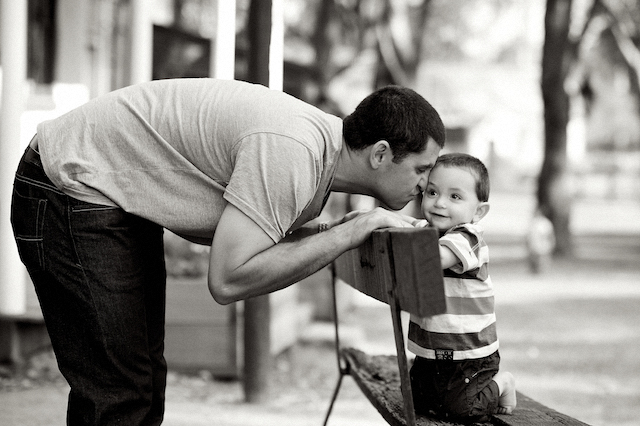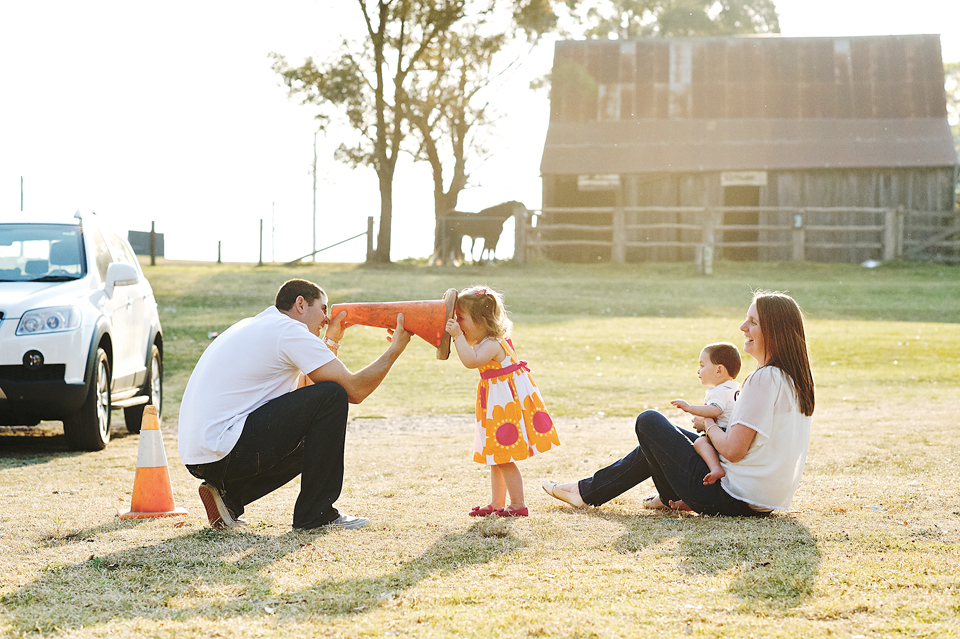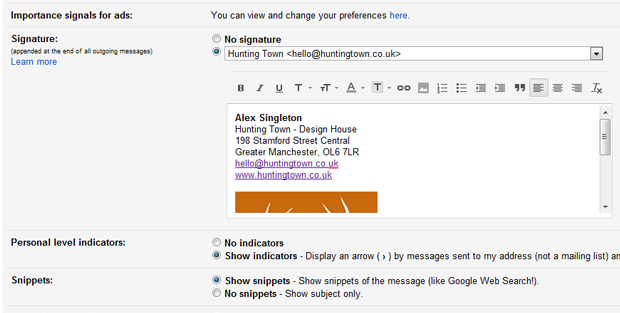Is a Graphic Design Degree Worthwhile?
46 CommentsTo the vast majority of people out there degrees are a huge expense and with 2012 having one of the highest rates of unemployment in graduates ever, they’re really not any kind of guarantee of finding work. For graphic design this is especially true as the United States Department for Education has dictated that the majority of graphic design courses are ineligible for federal funding, as they are “of poor value, with low loan repayment rates and low earnings after graduation”. So with that said, are they really necessary? In an industry of freelancers and design agencies, just how vital is a degree in graphic design?
I’m incredibly proud of my accomplishments and my abilities as a designer, but I often ask myself “would I be more successful or more talented if I’d have opted for a degree from the start?”
Now from the off I think it’s fair to point that not I (nor any designer really) can give a totally unbiased answer to the question of whether or not a degree in graphic design is worthwhile, as they would have either decided to obtain a degree or not to, and would no doubt want to support their decision. In my case I don’t have a degree in graphic design (although I do have a degree in history – which is still classed as an arts degree!) and am 100% self taught. I’m incredibly proud of my accomplishments and my abilities as a designer, but I often ask myself “would I be more successful or more talented if I’d have opted for a degree from the start?”. With that said, I will do my best to show off both sides of the argument in as clear and as unbiased way as I possibly can, not because it’s the only way to make this article genuinely useful – but to find out if I made the right call?
Ok, so with the absolute best intentions of being as unbiased as possible, I just want to share a couple of the first links that cropped up when I Googled the phrase “is a graphic design degree worthwhile?”. The first one I looked at was a Yahoo Answer which came back with quotes like
“A better use of time and money would be to buy some equipment and teach yourself as you will be in control of everything you learn and also in control of your finances” and “I chose to study at university and ended up teaching myself everything I know as the course didn’t offer the levels of information I required“.
The second link I followed up was from Apt Lab and threw out lines like this “In other words, graphic design is no more a growth industry than any other, finding a job will be difficult, and your course work might not be as relevant as you were told“.
This is on page one of Google.
So far I’m feeling pretty good about my decision, but we all know that negative stereotypes rise above good ones and that we can’t trust the few that speak out to be the voices of the many that are satisfied and unheard. So true to my word I have dug a little deeper and come up with some solid arguments for gaining a degree in graphic design to go alongside the argument for teaching yourself.
What you gain from a graphic design degree
Probably the most important thing you get out of a Graphic Design course (and pretty much any course for that matter) is knowledge. Actually having the know how to get the job done is a huge plus. It may seem obvious to the point of being ridiculous but graphic design has become an industry rife with amateurs who have got hold of a copy of Photoshop and now expect to be paid for anything they churn out. Being a graphic designer requires a working and in depth knowledge of a vast array of skills, and undergoing a design course is a sure fire way to learn them.
Another attribute of the graphic design course that very much goes hand in hand with knowledge is experience. At some point you will make mistakes, and when you do, it is far far better to be torn to shreds be a lecturer than it is by a paying client who is up against a deadline. Some things are just unforeseen, and whilst it’s true that the sooner you make mistakes the sooner you learn the solutions, an academic environment surely helps to soften the blow.
Design courses have you tackle a wide array of projects, all needing different styles and solutions and having that kind of variety in your portfolio is really beneficial
I’ve said before that one of the greatest assets any designer has in their arsenal is their portfolio, and design degrees are great for getting yours started off. More often than not design courses have you tackle a wide array of projects, all needing different styles and solutions and having that kind of variety in your portfolio is really beneficial when you’re first starting out. In some cases I’ve seen newly qualified designers present projects they did for huge brands like Coca Cola or Nike, and whilst these projects are ‘fake’, they’re fake in a very obvious way that doesn’t make it seem like you’re trying to get one over on a client, but still look very professional and show the type of work you’re capable of at the top level of design.
Designers with a degree start out in their careers with one more thing than those who are self taught, and that’s a design degree. It can be especially true for those looking for jobs in design agencies that a formal qualification in the position your applying for carries a lot of mileage and a few agencies even list it as a requirement for application. Whilst these are in the minority, what almost all graphic design agencies do state is that you need professional experience in order to apply (obviously they want to remove the amateurs I mentioned earlier), and guess what? A graphic design degree totally counts.
What’s true also, and what may be the most interesting fact to a lot of you reading this, is that designers with a degree are generally able to bring in a higher starting salary in graphic design. In general terms a graphic designer with a degree can expect to start off their careers with a salary of around £18,000 ($28,600) where as the average beginners income for those without a degree in the industry is in the area of £14,000 ($22,200). Wheather this is due to designers with a degree being shepherded into agencies rather than turning their hand to freelance work, I’m not certain, but the % gap in pay is substantial and should be something you definitely bear in mind.
What you gain from not having a graphic design degree
Those without degree’s more often having to take the freelance route and so gain a better understanding of the business side of the industry
Whilst it’s true that designers with a degree seem to earn more than those that don’t right out of the gate, it certainly isn’t the case for more seasoned creatives. Designers with a degree seem to earn a respectable average of £22,000 ($35,000) once they become a little more established in their industry, however those that are self taught often earn in the range of £27,000 ($43,000). Now again, this could be due to those without degree’s more often having to take the freelance route and so gain a better understanding of the business side of the industry, I can’t be sure, but it’s certainly interesting isn’t it?
A prevalent advantage of those without a degree is that they obtain what’s often referred to as a ‘real industry knowledge’. Since they have no lecturers to trust the word of, they learn from real life examples which in more cases than not, are their own. Thrown in at the deep end, a self taught designer knows from the very beginning that clients have deadlines, and that those deadlines are often not within the 6-8 weeks an undergraduate may be given to complete a similar project.
A student of design may see the fact that it isn’t on their syllabus as a misguided indication that these skills are either unneeded or unimportant
Whilst a degree course may offer an outline of how to set up your design portfolio, it offers very little by way of business advice for those wishing to begin a freelance career. It can be argued that such business knowledge has no place on a design course and that students should undergo additional tutelage if they wish to obtain it. But that doesn’t really help you out when your tax is due, you need to file several client invoices in order to get paid and you’re still not sure if you need to copyright your proofs? When you start out under your own steam, finding the answers to these questions seem as much a part of becoming a graphic designer as understanding typography, where as a student of design may see the fact that it isn’t on their syllabus as a misguided indication that these skills are either unneeded or unimportant.
One other thing that a self taught designer gains over that of an undergraduate is real solid client interaction. Dealing with clients is as much business skill as any other and is vastly important if you want to make it as a designer in any capacity (after all how can you understand and create what they want if you don’t know how to deal with them?). Whilst you may have to deal with the pernickety criticisms of a stuffy old lecturer when studying for a degree, at least they will be concise and accurate in telling you where you’re going wrong. Ask any designer and they’ll tell you the tale of that client who requested alterations so cryptic that even Indiana Jones couldn’t fathom what they were after. It may sound like hell (-and it is!) but it’s a part of being a designer that you just can’t be taught.
The last, and perhaps most obvious advantage to being self taught is a freedom from student loans. Degrees cost a huge amount of money today, and whilst it is certainly true that this is an investment in your future, if it’s an investment you don’t need to make, then it’s not a great one.
What employers look for
As I mentioned earlier, what an employer (or client) will look for when deciding to hire you is experience. Nobody wants to take a gamble on you when it comes to their business no matter how winning your smile is. Whether you can prove experience through a degree or client references, it will always pale in comparison to the experience shown in your portfolio. Any employer wants the best person for the job, and if the job is graphic design then it stands to reason that the best person for the job is the one with the best graphic designs. True, there are a whole host of other factors that enter into a decision like that, such as your personality or style, and when things come down to the line a degree or some real world experience can certainly help to turn the tide in your favour.
What you need (in either case)
Hopefully by now I’ve made it clear that you need a killer portfolio for whatever direction you want to take. You’re only as good as your worst example so keep on improving it and never let up. Having a degree, definitely sets you up in this respect, as you can’t help but finish with at least a few examples you’re happy with. However, don’t think that you can just skip this step if your going it alone, you won’t get far without some decent work behind you, so check out these articles on ‘how to get started in graphic design with no risk‘ and ‘how to get started as an illustrator‘ for some ideas.
When that question rolls around do you want to be able to step up and go the extra mile or crawl under your drawing table and let some other designer take the job?
You also need to go the extra mile and learn some skills that might be new to you. As I said in an early video defining graphic design, there is no longer any set job description and successful designers are constantly learning new skills and adapting as clients and employers expect more and more of them. It may not be something you’re taught, or even want to know, but at some point a client will simply expect you to be able to build them a website because “that’s the kind of thing you do, isn’t it?”. It may not be a market you’re aiming to get into, but when that question rolls around do you want to be able to step up and go the extra mile or crawl under your drawing table and let some other designer take the job?
The main thing you need though is hard hard work. Graphic design is an incredibly competitive industry and you need to make sure you’re at the absolute top of the pile. It really doesn’t matter if you have a degree or not- if you’re serious about becoming a designer then you need to resign yourself to the fact that you will never stop learning. Be it business skill, design techniques or just keeping on top of the latest trends, there is always something new to learn.
Conclusions
So what’s the right answer? Is a graphic design degree really worthwhile? Well by now you should realise that there isn’t a simple right or wrong answer. Both paths have their advantages and their drawbacks, and a lot of the decision will come down to what environment you think you’ll thrive in the best? Both options require a lot of self motivation and require you to be able to seek out knowledge that isn’t necessarily related to design. It seems that the majority of professional designers in the world today are just as split in their decision as 53% have degree’s in design where 47% don’t. With numbers that close I think we can at least be sure that having a degree is no more a free pass to a successful career then being self taught, and that what truly carries weight is your ability as a designer.
Personally I’m of the decision that I made a good call in not opting to follow a degree in graphic design. However, I don’t want to make the sweeping statement that you shouldn’t have a degree at all. As I said earlier, I have a degree is history, and I truly believe that the skills and the work ethic I obtained in achieving that degree were absolutely instrumental in getting me to where I am today. I feel that my degree was a critical stage in my professional development and whilst the actual subject of my studies may not be (totally) relevant to the work I’m doing today, the actual method of studying, self motivation, forward planning and research are skills that I use every single day as a graphic designer and as a business owner.
If you have any questions about whether or not to undertake a graphic design course, please do ask me in the comments below and I’ll do my best to offer up any help I can. If you’ve taken a course in graphic design, I’d love to hear about your experiences and if you thought the course was worth it in the long run. Likewise, if you’re a self made designer I want to hear your opinions of whether or not you think a degree might have speeded up your career. Let me know in the comments below.
Photo Credit to Dave Makes




